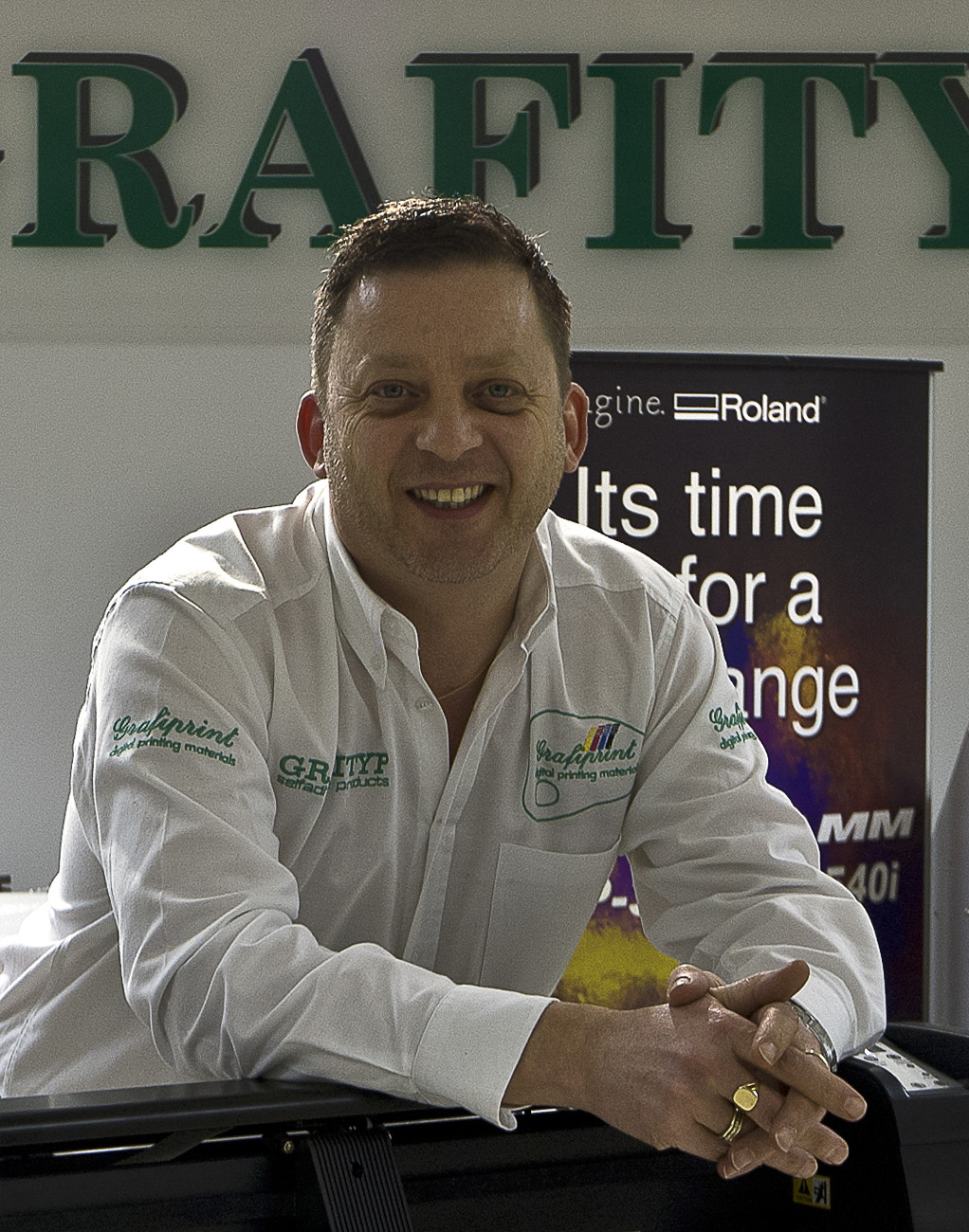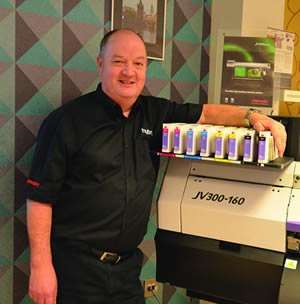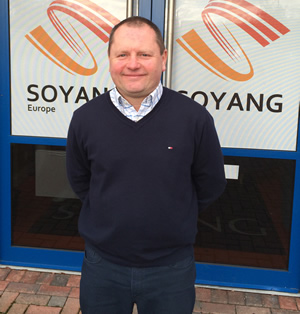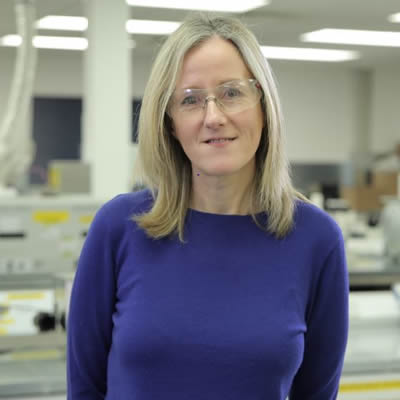Mild green is the answer to that if the responses from the UK’s large-format PSPs to the Image Reports’ Widthwise Survey 2015 are anything to go by. So do the sector’s suppliers feel the same way?
For every large-format PSP with laudable environmental initiatives and practices there are hundreds without. This is not gut feel – extrapolated data from the Widthwise Survey 2015 shows it to be the case. So is this somewhat wishy-washy sectoral attitude reflected by its suppliers? Here we asked a cross section for their current view of the situation and how they expect to move forward in a world where a ‘doing less bad is good’ attitude is becoming increasingly outmoded.
Questions
(1) The large-format digital print sector is hardly biting at the bit when it comes to environmental issues. Is this attitude impacting upon your R&D strategy for this market?
(2) Price has often been flagged up by PSPs as a reason for them shunning ‘greener’ products. How do you see the pricing situation evolving in terms of your own products?
(3) Where do you think your company can make the biggest positive environmental impact - and do you think that will impact sales into the large-format market?
(4) Where do you think the biggest pro-environmental developments will come from within the sector as a whole?
(5) What key influences do you think will shape the large-format market’s stance on the environment – and when?
Phil McMullin, Sales manager ProGraphics, Epson UK
(1) Considering environmental impact alongside health and safety factors is not new for Epson. We have been following best practices for many years and 17 years ago we launched our ambitious ‘Environmental Vision 2050’. This set out a road map of initiatives to tackle global warming, worldwide resource depletion and biodiversity loss by minimizing the ecological impact of our business and the products we manufacture. As a result we have already dramatically improved the eco footprint of our products by assessing and improving every step from design, materials selection, manufacturing, supply logistics, energy consumption, and collection and recycling – and will continue to do so.
(2) Good environmental credentials don’t have to mean charging more. Our inks and printers are very competitive and our philosophy is that you can achieve good quality with products that have high eco-credentials – they are not mutually exclusive.
(3) Our aim is to provide customer value by using compact, energy-saving, high precision technologies that reduce environmental impact across all parts of our business. The objectives set out in our ‘Environmental Vision 2050’ are to reduce CO2 emissions by 90% across the entire product life cycle and we are on target to achieve that.
We have made great strides in reducing the energy use of printers - eg. the curing temperatures on our platens are low because we have developed inks that can be cured at low temperatures.
We go beyond legislation on hazardous materials and aim not only to ban chemical substances, but also to control raw materials to ensure they comply with our policy to offer eco-friendly products. We integrate chemical management within the whole lifecycle of our products - from the purchase of raw materials to disposal.
(4) Over the next few years I predict that we will see an increase in soft signage and recyclable materials used by brands in the UK. London 2012 set out to be the first ‘green’ Olympics and as such put eco print firmly on the agenda. The vision to limit the environmental footprint and carbon emissions of the Games provided the financial imperative for companies to pay attention to how they produce graphics. When all the steps in the supply chain are working towards the same goal – the industry will make the most progress.
(5) Quite simply, demand and legislation will drive improved environmental practices across the industry. In my experience environmental changes in POS is driven by retailers and the major brands and corporations. They are increasingly demanding graphics that tick multiple eco boxes and, as a result, PSPs will have to meet the criteria if they want to attract the business.
Carole Noutary, Technical manager, R&D, Fujifilm Speciality Ink Systems
(1) Sustainability is actually at the top of the agenda for the leading print service providers and equipment manufacturers and Fujifilm is strongly committed to developing more environmentally friendly products and processes.
For example, Fujifilm recognised the environmental benefits of UV-cured inks over solvent-based technologies, particularly in reducing harmful emissions, and our ongoing R&D efforts reflect this continued focus. Fujifilm is certified to HSE standards (ISO 9001 & 14001 and OHSAS 18001) and formulates products to strict environmental criteria defined in an internal policy on the use of chemicals termed ‘Design for Health, Safety and Environment’. The aim is to proactively develop products with minimal impact on human health and the environment.
(2) Some PSPs just consider the price at the point of making a purchase. However it is the total cost of ownership that needs to be considered - energy consumption, reliability, production efficiency and wastage - all of which can be improved by using UV technology.
(3) Fujifilm has developed a leading position in the research and development of UV ink technologies and is continuously investing in these technologies due to their compelling environmental benefits.
The environmental benefits of UV technology compared to other ink technologies include the absence of VOCs, low drying energy requirements and very low wastage due to excellent jetting reliability. Furthermore, the market trend towards LED curing will drive those advantages further and Fujifilm is supporting this transition within its R&D strategy.
(4) Inkjet technology has huge potential and many wide-format printing processes are still to be fully digitised, a transition that is likely to have a significant positive impact on the environment. Fujifilm is committed to facilitating this process via developments in UV inkjet technology. For example, Fujifilm is working on widening the application latitude of UV inks allowing them to be used on a wider range of substrates, and also by increasing the functionality of the products.
(5) Different elements contribute to the drive towards improved sustainability. Local, national and European legislation has already shaped companies’ and people’s attitudes towards the environment, and compliance with environmental schemes represents added value for print service providers and print buyers. Leading print equipment manufacturers and suppliers have a corporate responsibility to meet green requirements and customers’ needs by offering printers, inks and materials with a lower environmental impact.
The print industry in its entirety is taking a more sustainable stance and the research and development of more sustainable solutions is a key innovation driver. As a result, manufacturers and suppliers are committed to developing advanced and environmentally friendly technologies as these will influence their own success in the future.
Neil Stevenson, Sales director, Grafityp
(1) Grafityp has always been totally committed in trying to bring innovative new ecological products to the market. For some time now we have offered a GEF (Grafityp Ecological film) range of laminates and sign making films, and we have now launched printable versions of our GEF films for both UV and eco solvent printers. Because of our philosophy of being as environmental as possible we are continuing to develop even more new and exciting products this way.
(2) Most companies would like to be more ‘green’ but not if this means much higher costs. Our job as a manufacturer is to get the ‘greener’ products to a point where switching to them is an affordable option. This is not always just about price alone, it’s also about the added benefits - things like the fact that our GEF laminates are flame resistant, and certified as B1 Din4102-1 (DE) and Class 1 BS476-7 (UK).
(3) Grafityp is green though and though, from our logo to our core philosophy and for many years we have been striving not only to produce new more environmentally friendly products, but also investing heavily in improving our normal day to day operation to ensure we are always leading the way in environmental practices.
(4) Grafityp has invested heavily in the development and production processes for the manufacturer of ecological materials, so as far as material development goes we are well underway, but materials are not a full solution. The rest of the various components used in the makeup of finished jobs also have to continue to improve, substrates that the print is mounted onto, ink to print with, machines using low energy amounts and even low emission vehicles. There is no one big development that will be the pro-environment solution; it is a concerted effort from all directions that will make the big difference.
(5) I think legislation eventually will push users closer to the ‘green’ choices. Limiting what can and cannot be used in products has been happening within the EU for some time and the natural progression of this will of course push people ever nearer to ecologic options.
John de la Roche, National sales manager, Sign & Graphics, Hybrid
(1) Mimaki continues to release more solutions with strong environmental credentials – be they inks that meet ever more stringent eco benchmarks or printers that use less energy, create less waste or leave a smaller carbon footprint. The company’s drive to innovate stretches beyond simply delivering ever more productive or powerful print engines – it is very aware of the part it can play in assisting print providers to leave less of a mark.
(2) Hybrid has been rewarding its solvent printer customers since 2008 with its rebate-linked cartridge recycling scheme; Let’s Do More! By taking the cost of print waste management out of the scenario (by funding the whole scheme itself) it makes the concept a ‘no brainer’ for PSPs to be a part of it. As such, the company is keeping around 40 tonnes of spent cartridges out of landfill every year – and on top of that, the print companies get rewarded with free ink too. It’s a real win-win.
(3) The Let’s Do More! scheme has delivered quantifiable and tangible environmental benefits for existing users but has also been a powerful reason to purchase for new companies too. Aside from solvent printers, solutions such as LED UV, latex and dye sublimation are making a big impact in changing how digital print providers view alternative solutions – opening up new methods of printing and delivering something that wins not only environmentally but creatively as well.
(4) Customer demands - particularly from blue-chip companies such as high profile retail brands that are required to show provenance and traceability in their supply chain have been changing the way print providers operate for a few years now. Mimaki has been responding to these print providers with ever better solutions as it continues to listen to its customers and work alongside them.
(5) Legislative forces are typically the most influential when it comes to creating change, but when print companies can leverage additional benefit (financial, creative or operational etc.) from using a more ecologically sound solution, it becomes an ever easier sell.
Andrew Simmons, Sales director, Soyang Europe
(1) Our parent company, Soyang Technologies in China has invested heavily in developing new textile production lines which are specifically designed to meet the rising demand in Europe for more versatile materials with stronger eco-credentials. Similarly our other production partners such as Endutex in Portugal are going to great lengths to develop products which really do address the concerns that end users may have, with materials such as PVC-free media and polyester fabrics which have lesser environmental impact than conventional banner materials or rigid substrates.
(2) In general terms, the cost of developing new products that meet specific criteria tends to come early on in a product’s life-cycle. As demand grows and more customers embrace the new products, the price will inevitably fall. This is already happening with many new textile materials for the exhibition graphics sector, which have little or no price premium over conventional vinyl banner material or rigid substrates.
(3) Textile is undoubtedly the area where the biggest effect will be felt. Demand is rising rapidly as end-users see numerous benefits from using this type of media. These products are lighter, more versatile, take up less space and are more easily transported all of which have significant impacts on a company’s carbon footprint through reduced transport and labour costs.
(4) Again, Textile is going to continue to be the key area of focus. The retail sector is very much at the forefront of this development and it’s happening now. Textile graphics are considerably more versatile than the conventional alternatives; easier to transport, less prone to damage (particularly in transit), easy to apply with less skill required, fully interchangeable and readily re-usable and also now fully recyclable. It ticks a lot of boxes, for a lot of people!
(5) The exhibition and retail industries have become strong leaders and opinion-formers in this respect. Their size and market profile almost demand that they take a strong positive environmental stance and demonstrate their environmental responsibilities quite vigorously. In many respects this has already been happening to a greater degree in countries such as Italy and Germany, where there are number of major exhibitions where every single stand or booth uses textile based graphics. The UK is already realising that it has a bit of catching-up to do.
{jathumbnail off}


